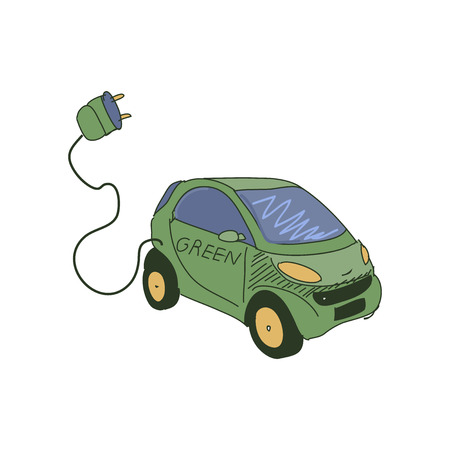1. Introduction: The Rise of Recycled Plastics in Automobiles
The automotive industry is undergoing a transformation, with sustainability at the heart of modern vehicle design. One key development is the increasing use of recycled plastics in automotive interiors. As concerns about environmental impact grow, manufacturers are looking for ways to reduce waste while maintaining quality and performance. Recycled plastics offer a practical solution, helping to create stylish, durable, and eco-friendly car interiors.
Why Automakers Are Turning to Recycled Plastics
Traditionally, car interiors have relied on virgin plastics, which are made from fossil fuels and contribute to environmental damage. However, with advances in recycling technology, automakers are now embracing recycled plastics for several reasons:
- Environmental Benefits: Using recycled materials reduces plastic waste and lowers carbon emissions.
- Cost Efficiency: Recycled plastics can be more cost-effective than producing new materials.
- Improved Durability: Modern recycled plastics maintain the same strength and flexibility as traditional materials.
- Consumer Demand: Customers are increasingly looking for sustainable products, pushing automakers to adopt eco-friendly solutions.
Common Sources of Recycled Plastics
Recycled plastics used in automotive interiors come from various sources, including household waste and industrial recycling processes. The table below highlights some common sources:
| Source | Description |
|---|---|
| Post-Consumer Plastic | Plastic waste from everyday products like water bottles and packaging. |
| Post-Industrial Plastic | Scraps and excess materials from manufacturing processes. |
| Ocean Plastic | Plastic waste collected from oceans and waterways to reduce pollution. |
| End-of-Life Vehicles (ELV) | Recycled plastic parts from old and decommissioned vehicles. |
How Recycled Plastics Are Used in Car Interiors
Recycled plastics can be found in various parts of modern car interiors, including:
- Seat Fabrics: Many automakers now use recycled polyester in upholstery and seat covers.
- Dashboards and Panels: Recycled plastics provide a durable and stylish alternative to traditional materials.
- Carpet and Floor Mats: Fibers made from recycled plastic bottles help create sustainable flooring solutions.
- Door Trims and Consoles: Recycled plastics can be molded into complex shapes for interior components.
Industry Leaders in Recycled Plastics
Several major automotive manufacturers are leading the way in integrating recycled plastics into their vehicles. Brands like Ford, BMW, and Toyota have introduced models that feature significant amounts of recycled plastic in their interiors. These efforts are helping to set new industry standards for sustainability.
The Future of Recycled Plastics in Automobiles
As technology continues to improve, the use of recycled plastics in automotive interiors is expected to grow. With stronger regulations on sustainability and increasing consumer awareness, recycled materials will play a crucial role in shaping the next generation of eco-friendly vehicles.
2. Benefits of Using Recycled Plastics in Car Interiors
Exploring the Environmental and Economic Advantages
As the automotive industry shifts towards sustainability, recycled plastics are playing a key role in transforming car interiors. Not only do they help reduce waste, but they also offer a range of environmental and economic benefits.
Reduced Carbon Footprint
One of the biggest advantages of using recycled plastics is their ability to lower the carbon footprint of vehicle manufacturing. By reusing plastic waste, automakers can cut down on the need for virgin plastic production, which requires significant energy and fossil fuels.
Cost-Effectiveness
Recycled plastics provide a cost-effective alternative to traditional materials. Since they are sourced from existing plastic waste, the production costs are often lower compared to new plastic materials. This cost reduction benefits both manufacturers and consumers, making sustainable choices more affordable.
Improved Material Performance
Modern recycled plastics are designed to match or even outperform traditional materials in durability, flexibility, and resistance to wear and tear. Advanced processing techniques ensure that recycled plastics maintain high-quality performance, making them a reliable choice for car interiors.
Comparison of Recycled and Traditional Plastics
| Feature | Recycled Plastics | Traditional Plastics |
|---|---|---|
| Environmental Impact | Reduced waste and lower emissions | Higher carbon footprint and pollution |
| Cost | More affordable due to lower material costs | Higher costs due to virgin material use |
| Durability | Enhanced with advanced processing | Varies based on type and quality |
| Sustainability | Supports circular economy | Uses non-renewable resources |
Growing Adoption in the Automotive Industry
More automakers are integrating recycled plastics into their designs, from seats to dashboards. This trend is not only beneficial for the planet but also aligns with increasing consumer demand for sustainable vehicles.

3. Innovative Applications in Interior Design
As automakers strive to create more sustainable vehicles, they are integrating recycled plastics into various interior components. These materials help reduce environmental impact while maintaining quality and durability. Lets explore how recycled plastics are transforming dashboards, seats, door panels, and other interior elements.
Dashboards Made with Recycled Plastics
Modern car dashboards incorporate recycled plastics to enhance sustainability without compromising strength or aesthetics. Automakers use materials like recycled PET bottles and post-industrial plastic waste to create durable dashboard surfaces that are both eco-friendly and visually appealing.
Seats with Eco-Conscious Materials
Recycled plastics play a crucial role in seat manufacturing, providing comfortable and stylish upholstery. Many automakers now use recycled polyester and plastic fibers to create soft yet durable seat coverings. These materials not only reduce waste but also offer excellent wear resistance.
Door Panels Utilizing Sustainable Plastics
Car door panels benefit from recycled plastics in multiple ways. Automakers mix recycled polypropylene and other plastic composites to craft strong, lightweight, and durable door panels. These materials help improve vehicle efficiency by reducing overall weight while maintaining structural integrity.
Other Interior Components
Beyond dashboards, seats, and door panels, recycled plastics are used in various other interior components, such as carpeting, headliners, and storage compartments. Below is a breakdown of how recycled plastics contribute to different interior elements:
| Interior Component | Recycled Material Used |
|---|---|
| Carpeting | Recycled PET fibers |
| Headliners | Recycled textile blends |
| Storage Compartments | Recycled polypropylene |
The Future of Recycled Plastics in Car Interiors
With continuous advancements in recycling technology, automakers are expanding their use of sustainable materials. Innovative developments allow for even more car interior components to incorporate recycled plastics, further reducing environmental impact while maintaining high-performance standards.
4. Challenges and Limitations
While recycled plastics are making significant strides in automotive interiors, there are still some challenges and limitations that manufacturers must address. From durability concerns to material sourcing and manufacturing constraints, these factors play a crucial role in determining the feasibility of using recycled plastics in vehicles.
Durability Concerns
One of the main concerns with using recycled plastics in automotive interiors is durability. Unlike virgin plastics, recycled materials can sometimes be weaker or degrade faster over time. Factors such as exposure to heat, UV rays, and continuous wear and tear can impact the longevity of these materials.
Material Sourcing Challenges
Obtaining high-quality recycled plastic that meets automotive industry standards can be difficult. Not all recycled plastics have the necessary strength, flexibility, or heat resistance required for vehicle interiors. Additionally, inconsistencies in recycling processes can lead to variations in material quality.
Manufacturing Constraints
Manufacturing with recycled plastics presents its own set of challenges. Some factories may need modifications to their production processes to accommodate these materials. Furthermore, recycled plastics may not always behave the same way as virgin plastics during molding and fabrication, requiring extra effort in engineering and design.
Comparison of Virgin Plastics vs. Recycled Plastics
| Factor | Virgin Plastics | Recycled Plastics |
|---|---|---|
| Durability | High and consistent | Varies; can degrade faster |
| Material Quality | Uniform and reliable | Inconsistent due to recycling processes |
| Manufacturing Adaptability | Compatible with existing processes | May require process adjustments |
| Environmental Impact | Higher carbon footprint | More sustainable option |
Addressing These Challenges
Despite these challenges, automakers and material scientists continue to work on improving the quality and performance of recycled plastics. Advances in chemical recycling and material processing are helping to enhance durability and consistency, ensuring that recycled plastics can meet industry requirements.
5. The Future of Sustainable Automotive Interiors
Examining Upcoming Trends
The automotive industry is continuously evolving, and sustainability is becoming a key focus. Automakers are investing in innovative materials that reduce environmental impact while maintaining quality and durability. One emerging trend is the use of bio-based plastics, which are derived from renewable resources like corn starch and sugarcane instead of petroleum-based materials.
Another significant trend is the adoption of closed-loop recycling systems, where automotive manufacturers recycle old vehicle parts into new ones. This reduces waste and minimizes reliance on virgin plastics, further advancing the industrys commitment to sustainability.
Advancements in Recycling Technologies
Recycling technology is improving rapidly, making it easier to process and repurpose plastic waste. Innovations such as chemical recycling break down plastics at a molecular level, allowing them to be reused without losing their structural integrity. This means plastics from old cars can be turned into high-quality materials for new interiors.
Here’s a comparison of traditional and emerging recycling methods:
| Recycling Method | Description | Benefits |
|---|---|---|
| Mechanical Recycling | Melts and reshapes plastics into new products. | Cost-effective but may degrade plastic quality. |
| Chemical Recycling | Breaks plastics down into base chemicals. | Produces high-quality reusable materials. |
| Closed-Loop Recycling | Recycles auto plastics for reuse in cars. | Reduces the need for new plastic production. |
Further Incorporating Eco-Friendly Materials
Automakers are committed to using more sustainable materials to create environmentally responsible interiors. Beyond recycled plastics, manufacturers are incorporating textiles made from recycled fibers, natural fibers like bamboo, and biodegradable materials. Leather alternatives derived from mushrooms or apple peels are also gaining popularity as the industry moves away from animal-based products.
As car brands continue to push the limits of eco-conscious design, future interiors will not only be stylish and comfortable but also significantly more sustainable.


